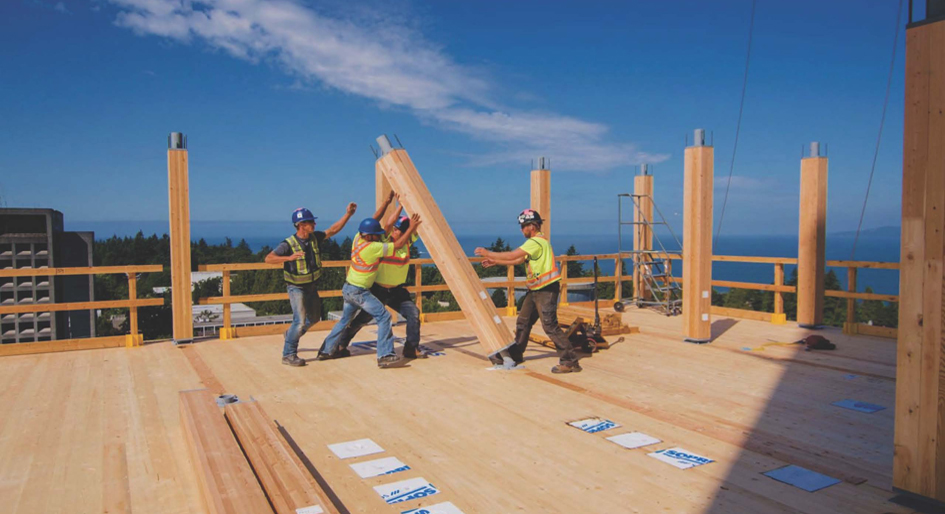B.C. will be first in Canada to allow 12-storey mass timber buildings. The current building code allows only six-storey mass timber buildings, but the national building code is expected to be revised to increase height limits to 12 -storeys in 2020.
“Changes to the national building code that allow for taller wood buildings take effect next year, but we’re not waiting to get started. Our government is ready to work with communities to build safe, secure and green tall wood buildings that will create jobs, grow B.C.’s value-added sector and realize our low-carbon future,” said Premier John Horgan, who made the announcement at the Structurlam production facility in Okanagan Falls.
B.C. has obtained permission from the National Research Council to use the encapsulated mass-timber construction provisions from the 2020 National Building Code through a jurisdiction-specific regulation.
The provincial government’s new policy effectively invites local and municipal governments regulated under the B.C. Building Code to voluntarily adopt the new policies, if they want.
A mass timber building is one where the primary load-bearing structure is made of either solid or engineered wood. Encapsulated mass timber is where the mass timber components are surrounded by fire-resistant materials like drywall.
“Mass timber technology allows faster construction where large sections of a building can be manufactured in a plant and then assembled on site,” said Selina Robinson, Minister of Municipal Affairs and Housing. “The faster we can deliver the homes that people need, the better for communities right across B.C.”
According to the government, mass timber buildings can be one-fifth the weight of comparable concrete buildings, while still meeting performance standards for safety, structural resilience and fire protection.
Studies have shown the environmental benefits of using mass timber. The estimated carbon benefit from the wood used in the Brock Commons building was equivalent to taking 511 cars off the road for a year.
The development of innovative and cost-effective low-carbon building solutions — like construction using mass timber technology — supports government’s CleanBC goal of making every building more efficient, while creating more jobs and economic opportunities for people, businesses and communities.
The technology has been reviewed by the national building code committees, as well as by experts such as fire safety specialists, structural engineers, architects, scientists and builders.
The Ministry of Municipal Affairs and Housing staff will contact local governments with a request for expressions of interest and detailing the next steps for any local governments interested in this voluntary program.










